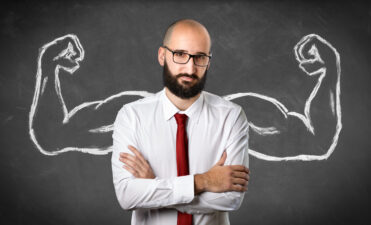Thomson Reuters Corp. (TSX:TRI)(NYSE:TRI), the world’s leading source of intelligent information for businesses and professionals, released its third-quarter earnings results this morning, and its stock has responded by falling over 6% in early trading. Let’s break down the results and the fundamentals of its stock to determine if we should consider using this weakness as a long-term buying opportunity.
The results that ignited the sell-off
Here’s a quick breakdown of 10 of the most notable financial statistics from Thomson Reuters’s three-month period ended September 30, 2017, compared with the same period in 2016:
| Metric | Q3 2017 | Q3 2016 | Change |
| Revenues: Financial & Risk segment | US$1,542 million | US$1,516 million | 1.7% |
| Revenues: Legal segment | US$843 million | US$835 million | 1.0% |
| Revenues: Tax & Accounting segment | US$341 million | US$323 million | 5.6% |
| Total revenues | US$2,792 million | US$2,744 million | 1.7% |
| Adjusted EBITDA | US$849 million | US$814 million | 4.3% |
| Adjusted EBITDA margin | 30.4% | 29.7% | 70 basis points |
| Adjusted earnings | US$487 million | US$403 million | 20.8% |
| Adjusted earnings per share (EPS) | US$0.68 | US$0.54 | 25.9% |
| Cash flow from operations (including discontinued operations) | US$808 million | US$758 million | 6.6% |
| Free cash flow (including discontinued operations) | US$531 million | US$519 million | 2.3% |
Reiteration of its outlook
In the press release, Thomson Reuters reiterated its full-year outlook, which calls for low single-digit percentage revenue growth, an adjusted EBITDA margin in the range of 29.3-30.3%, free cash flow in the range of US$900 million to US$1.2 billion, and adjusted EPS in the range of US$2.40-2.45; however, the company added that it now expects its adjusted EPS to come in at the top of this range.
Should you buy on the dip?
It was a solid quarter overall for Thomson Reuters. It posted strong results for the first nine months of 2017, with its revenues up 1% to US$8.39 billion, its adjusted EBITDA up 10.5% to US$2.56 billion, and its adjusted EPS up 29.9% to US$1.91. However, the third-quarter results came in mixed compared with analysts’ expectations, which called for adjusted EPS of US$0.58 on revenue of US$2.82 billion, so I think that’s why the stock is taking a hit today.
That being said, I think the sell-off represents a great entry point for long-term investors for two fundamental reasons.
First, it’s attractively valued. Thomson Reuters’s stock now trades at just 17.9 times the high end of its adjusted EPS outlook for fiscal 2017 and only 16.5 times the consensus analyst estimate of US$2.66 for fiscal 2018, both of which are inexpensive given its current double-digit earnings-growth rate and its estimated 13.3% long-term earnings-growth rate.
Second, it’s a dividend aristocrat. Thomson Reuters currently pays a quarterly dividend of US$0.345 per share, equating to US$1.38 per share annually, which gives it a 3.15% yield. Investors must also note that the company’s 1.5% dividend increase in February has it on track for 2017 to mark the 24th consecutive year in which it has raised its annual dividend payment, making it both a high-yield and dividend-growth play today.
With all of the information provided above in mind, I think all Foolish investors should strongly consider using the post-earnings weakness in Thomson Reuters’s stock to begin scaling in to long-term positions.







